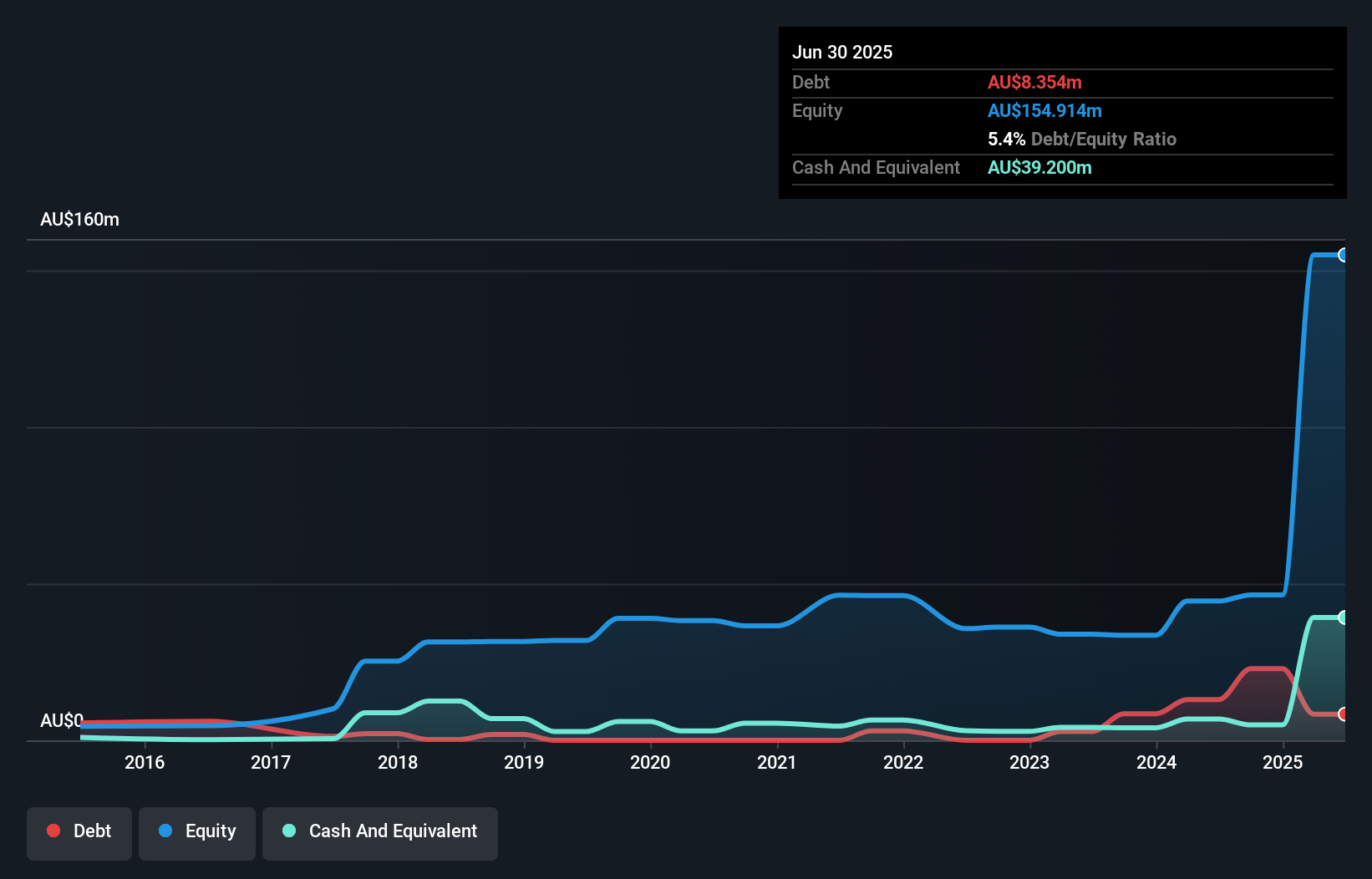- Australia
- /
- Metals and Mining
- /
- ASX:PLA
Does Pacific Lime and Cement (ASX:PLA) Have A Healthy Balance Sheet?
Howard Marks put it nicely when he said that, rather than worrying about share price volatility, 'The possibility of permanent loss is the risk I worry about... and every practical investor I know worries about.' It's only natural to consider a company's balance sheet when you examine how risky it is, since debt is often involved when a business collapses. As with many other companies Pacific Lime and Cement Limited (ASX:PLA) makes use of debt. But the real question is whether this debt is making the company risky.
When Is Debt Dangerous?
Generally speaking, debt only becomes a real problem when a company can't easily pay it off, either by raising capital or with its own cash flow. Ultimately, if the company can't fulfill its legal obligations to repay debt, shareholders could walk away with nothing. While that is not too common, we often do see indebted companies permanently diluting shareholders because lenders force them to raise capital at a distressed price. Of course, the upside of debt is that it often represents cheap capital, especially when it replaces dilution in a company with the ability to reinvest at high rates of return. When we examine debt levels, we first consider both cash and debt levels, together.
What Is Pacific Lime and Cement's Debt?
As you can see below, Pacific Lime and Cement had AU$8.35m of debt at June 2025, down from AU$13.0m a year prior. But it also has AU$39.2m in cash to offset that, meaning it has AU$30.8m net cash.

A Look At Pacific Lime and Cement's Liabilities
We can see from the most recent balance sheet that Pacific Lime and Cement had liabilities of AU$16.7m falling due within a year, and liabilities of AU$172.5k due beyond that. On the other hand, it had cash of AU$39.2m and AU$4.05m worth of receivables due within a year. So it can boast AU$26.4m more liquid assets than total liabilities.
This short term liquidity is a sign that Pacific Lime and Cement could probably pay off its debt with ease, as its balance sheet is far from stretched. Simply put, the fact that Pacific Lime and Cement has more cash than debt is arguably a good indication that it can manage its debt safely. There's no doubt that we learn most about debt from the balance sheet. But it is future earnings, more than anything, that will determine Pacific Lime and Cement's ability to maintain a healthy balance sheet going forward. So if you're focused on the future you can check out this free report showing analyst profit forecasts.
View our latest analysis for Pacific Lime and Cement
Given its lack of meaningful operating revenue, investors are probably hoping that Pacific Lime and Cement finds some valuable resources, before it runs out of money.
So How Risky Is Pacific Lime and Cement?
While Pacific Lime and Cement lost money on an earnings before interest and tax (EBIT) level, it actually booked a paper profit of AU$271k. So when you consider it has net cash, along with the statutory profit, the stock probably isn't as risky as it might seem, at least in the short term. With mediocre revenue growth in the last year, we're don't find the investment opportunity particularly compelling. When analysing debt levels, the balance sheet is the obvious place to start. But ultimately, every company can contain risks that exist outside of the balance sheet. We've identified 3 warning signs with Pacific Lime and Cement , and understanding them should be part of your investment process.
When all is said and done, sometimes its easier to focus on companies that don't even need debt. Readers can access a list of growth stocks with zero net debt 100% free, right now.
New: Manage All Your Stock Portfolios in One Place
We've created the ultimate portfolio companion for stock investors, and it's free.
• Connect an unlimited number of Portfolios and see your total in one currency
• Be alerted to new Warning Signs or Risks via email or mobile
• Track the Fair Value of your stocks
Have feedback on this article? Concerned about the content? Get in touch with us directly. Alternatively, email editorial-team (at) simplywallst.com.
This article by Simply Wall St is general in nature. We provide commentary based on historical data and analyst forecasts only using an unbiased methodology and our articles are not intended to be financial advice. It does not constitute a recommendation to buy or sell any stock, and does not take account of your objectives, or your financial situation. We aim to bring you long-term focused analysis driven by fundamental data. Note that our analysis may not factor in the latest price-sensitive company announcements or qualitative material. Simply Wall St has no position in any stocks mentioned.
About ASX:PLA
Pacific Lime and Cement
An investment holding company, engages in the exploration and evaluation of mineral resources.
Mediocre balance sheet with low risk.
Market Insights
Community Narratives





